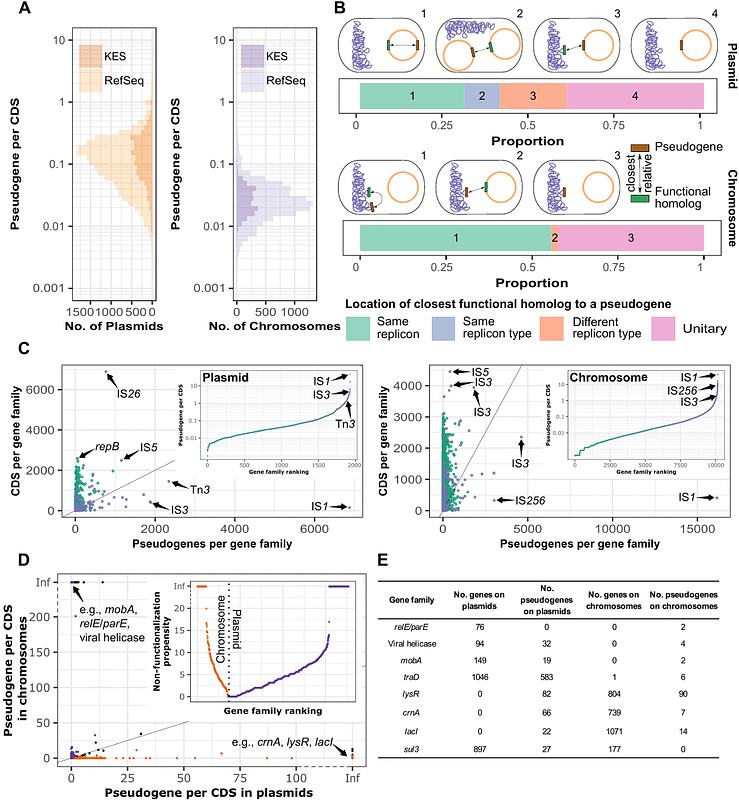Pseudogenes in plasmid genomes reveal past transitions in plasmid mobility

Pseudogenes in plasmid genomes reveal past transitions in plasmid mobility
Hanke, D. M.; Wang, Y.; Dagan, T.
AbstractEvidence for gene non-functionalization due to mutational processes is found in genomes in the form of pseudogenes. Pseudogenes are known to be rare in prokaryote chromosomes, with the exception of lineages that underwent an extreme genome reduction (e.g., obligatory pathogens). Much less is known about the frequency of pseudogenes in prokaryotic plasmids; those are genetic elements that can transfer between cells and may encode beneficial traits for their host. Non-functionalization of plasmid-encoded genes may alter the plasmid characteristics, e.g., mobility, or their effect on the host. Analyzing 10,832 prokaryotic genomes, we find that plasmid genomes are characterized by threefold-higher pseudogene density compared to chromosomes. The majority of plasmid pseudogenes correspond to deteriorated transposable elements. A detailed analysis of enterobacterial plasmids furthermore reveals frequent gene non-functionalization events associated with the loss of plasmid self-transmissibility. Reconstructing the evolution of closely related plasmids revealed that non-functionalization of the conjugation machinery led to the emergence of non-mobilizable plasmid types. Examples are virulence plasmids in Escherichia and Salmonella. Our study highlights non-functionalization of core plasmid mobility functions as one route for the evolution of domesticated plasmids. Pseudogenes in plasmids supply insights into past transitions in plasmid mobility that are akin to transitions in bacterial lifestyle.